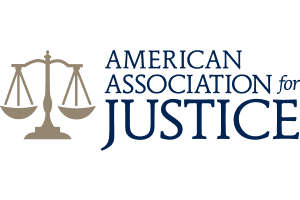800.696.9529
New York Sacral Spinal Injury
The experienced New York Sacral Spinal Injury Attorney staff at Stephen Bilkis & Associates, PLLC has found the most common causes of sacral spinal injury are slip and fall, assault, motor vehicle accident, sports injury and high distance fall such as in a ladder accident. The sacral spine, also referred to as the sacrum, is the irregular triangular-shaped bone consisting of five fused vertebrae, which sits below the lumbar region of the spinal column. A wedge-shaped intervertebral disc, known as the lumbosacral disc, is situated between the last lumbar vertebra and the sacrum. The sacrum is wedged between the pelvic bones and held in place by the sacroiliac joints. A sacral canal traverses the center of the sacrum continuing the vertebral canal. The functional spinal cord terminates at the first sacral vertebra, but the filum terminale, the end of the spinal cord, continues to the first coccygeal vertebra. On each side of the sacrum there are four openings, which the spinal nerves and blood vessels exit through. The sacrum is a solid, sturdy injury-resistant structure. Severe trauma can induce lumbosacral fracture, sacral fracture, disruption of the sacroiliac joints or spinal cord damage. If you are suffering from a sacral spinal injury, contact our experienced group of New York Spinal Injury Lawyers to discuss your legal options.
The location where the lumbar spine and the sacral spine meet is known as the lumbosacral junction. Due to the enormous amount of stress and twisting placed on this junction, spinal injury is very common. There are two classifications of lumbosacral spinal fracture: mechanism of injury and degree of instability. The skilled New York Sacral Spinal Injury Lawyer group at Stephen Bilkis & Associates, PLLC has found several categories associated with lumbosacral spinal fracture, including flexion-rotation injury, compression fracture, transverse process fracture, burst fracture and pathologic fracture. The different categories of lumbosacral spinal fracture are classified as stable or unstable. Abnormal movement of the fracture location indicates an unstable lumbosacral spinal fracture and may exhibit neurologic injury. None to minimal abnormal movement of the fracture location indicates a stable lumbosacral spinal fracture exhibiting little to no neurologic injury. Lumbosacral spinal fracture may induce temporary or permanent disability. According to the New York Injury Attorney team at Stephen Bilkis & Associates, PLLC, most incidents of lumbosacral spinal fracture result in little to no spinal cord trauma.
At times a severe fall or motor vehicle accident can fracture the sacrum or cause disruption of sacroiliac joints. Both types of sacral spinal injury elicit severe pain down the leg through the knee to the ankle and foot. Most times these types of sacral spinal injury are undiagnosed due to the symptoms coinciding with those of a herniated disc.
According to our New York Sacral Spinal Injury Attorney group, lower back pain is among the most common symptoms of sacral spinal injury, along with:
- Edema
- Tingling
- Bruising
- Numbness
- Lower extremity pain
- Lower extremity paralysis
- Loss of bowel function
- Loss of bladder function
The highly knowledgeable New York Spinal Injury Lawyer team at Stephen Bilkis & Associates, PLLC has learned several diagnostic tests, such as magnetic resonance imaging (MRI scans), bone scan, computerized tomography (CT scans) and physical examination, are employed to assess the degree of sacral spinal injury. The New York Spinal Injury Lawyer staff at Stephen Bilkis & Associates, PLLC has learned treatment of sacral spinal injury is dependent upon the presence of neurologic deficiency and degree of instability. Stable sacral spinal injury typically relies on non-operative treatment, as in bed rest, custom brace or limited activity. Unstable sacral spinal injury may require surgical intervention to stabilize the spinal column and decompress the spinal cord. Recovery depends upon the type of sacral spinal injury and the treatment process. According to the New York Sacral Spinal Injury Attorney team, rehabilitation often utilizes heat and cold to inhibit muscle discomfort and pain, trunk stabilization, supervised physical therapy and home exercises.
Sacral spinal injury can reduce your range of motion or lead to paralysis. Significant treatment and recovery can lead to substantial medical bills, loss of quality of life and loss of wages. Contacting the New York Spinal Injury Lawyer staff at Stephen Bilkis & Associates, PLLC may be essential in the successful pursuit of your sacral spinal injury claim.
If you or someone you love is suffering from a sacral spinal injury, contact our New York Spinal Injury Attorney team with Stephen Bilkis & Associates, PLLC for a free initial case evaluation. Call us or contact us online or visit one of our office localities throughout the New York City or Long Island area. We have offices in Manhattan, Brooklyn, Queens, Bronx, Staten Island, Suffolk County, Nassau County and Westchester County.














